
views
Dividing a Lime into Wedges
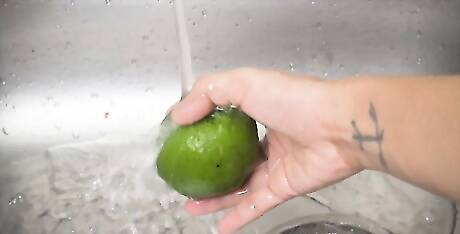
Remove any stickers and wash the lime. Before you cut your lime, remove any stickers on the outside peel. Then, give your lime a 5-10 second rinse in hot water and dry it off completely. This ensures that you have a clean lime for garnishing your drink or plate. Some people scrub their limes with a brush when rinsing them. This isn't necessary, but it can be helpful if your limes have dirt and debris on them, like those picked straight from the tree.

Use a sharp knife to cut the tips off the lime. Use a small, sharp knife like a paring knife or a utility knife to cut the tip off both ends of your lime. The lime should be able to sit flat if you stand it up on either end. Don't cut deep enough that you expose the flesh of the time. You should just take off the excess, raised peel at either end of the lime.

Place each half on a cutting board with the rind facing up. On a clean cutting board, place each half of your lime so that the flesh is toward the board and the rind is facing you. This gives you better grip as you cut and produces more even wedges.
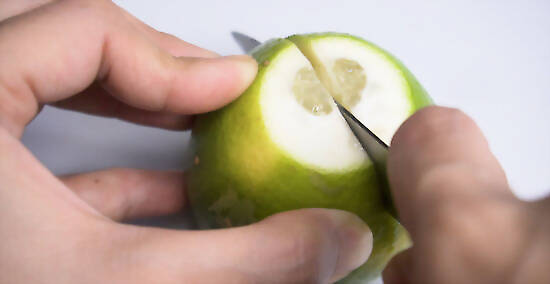
Cut the lime in half length-wise. You don't want to cut around the width of the fruit. Instead, slice it in half between the pointy ends you just removed.
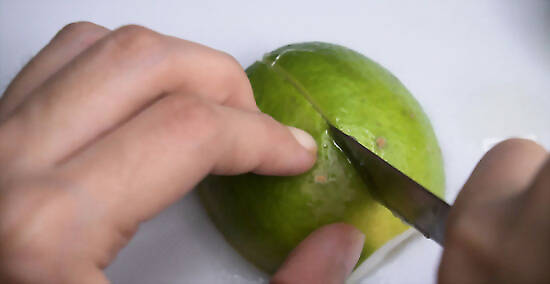
Slice each half into 2-3 wedges. Cut length-wise right down the center of both lime halves to get 4 wedges from a smaller lime. For a larger lime, cut each half at an angle to divide it into 3 even pieces to get 6 total wedges. You want the wedge to be large enough so that you can squeeze it into your drink or over your food. Try not to make it so small that you won't get any juice from the wedge. If you plan on putting your wedge on the rim of a glass, make a small cut in the center of the wedge's flesh so it can sit on the glass evenly.
Making Wheels
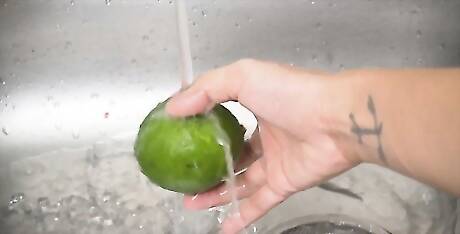
Rinse your lime and remove any stickers. If your lime has any stickers on the peel, remove them before starting your cuts. Then, rinse the lime under hot water for 5-10 seconds to remove any dirt and debris. Dry it completely with a clean towel before continuing.
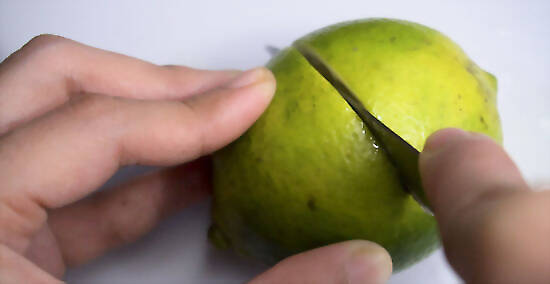
Cut your lime in half width-wise. To get perfect wheels, place your lime on a cutting board. Then, use a short, sharp knife to cut your lime width-wise through the widest part.
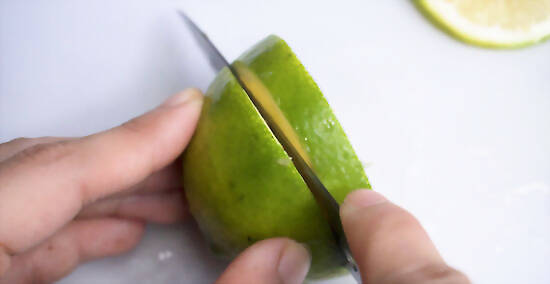
Make another cut ⁄4 inch (6.4 mm) back on each half. Place your knife ⁄4 inch (6.4 mm) to ⁄8 inch (3.2 mm) back on the peel of the lime and slice across the width of the fruit. This should produce a round, wheel-shaped slice. Repeat this process with each half of the lime until the wheels get too small for your purposes or until you've reached the end of the lime flesh.
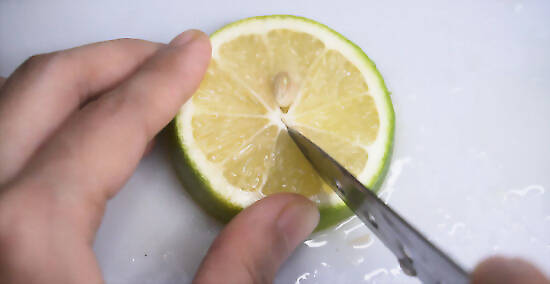
Slice from the center of the wheel to the edge for glass garnishes. If you plan on hanging your lime slice off of a glass, make a slit so that the fruit can hang onto the rim. Run your knife from the white part at the center of your wheel out to the peel. Then, place your slice on the glass with the slit on either side of the rim.
Peeling a Lime for Garnish
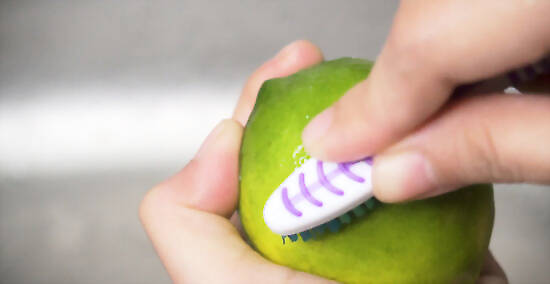
Rinse your lime thoroughly. Lime peels are typically submerged in drinks as garnish. That's why it's important to thoroughly clean your lime before peeling it. Remove any stickers on the peel and rinse the lime in hot water for 10-15 seconds. Use a clean dish brush to scrub the lime peel. Once your lime is clean, dry it thoroughly with a clean dish towel before peeling it.
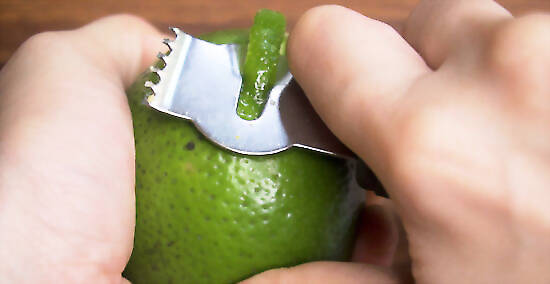
Run a channel knife length-wise along the peel of the lime. To get the best peel for a twist, position a channel knife at the pointy end of your lime. Run the knife down the length of your lime to the other point end. Then, pluck the peel from the lime. Channel knives create deep, clean cuts on citrus peels. You can find these at most kitchen stores and major online retailers.
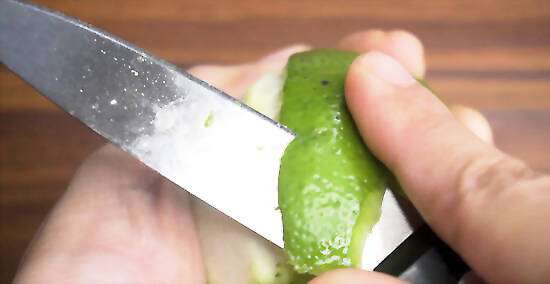
Cut the peel with a paring knife if you don't have a channel knife. If you don't have a channel knife available, you can use a paring knife to peel your lime. Hold the lime firmly in one hand and run the edge of your blade down the length of the lime so that you only cut away the peel. Cut away from you to minimize the chance of accidents. You can also use a sharp vegetable peeler to create your garnish. The thick peel will quickly dull blades, though, so if you plan to peel citrus garnish frequently, a paring knife or channel knife is a better tool.
Twist the peel over your glass. Once your drink is ready, grab the peel with each hand between your thumbs and index fingers. Twist the peel directly over the glass to release the essentials oils, then drop the twist into the drink. You can also hang the peel off the edge of the glass to make it easier for the drinker to retrieve. Jeffrey Morgenthaler Jeffrey Morgenthaler, Bartender To cut a lime, start by cutting off the ends so that you have a flat surface to work with. Then, cut the lime in half lengthwise. Place one half cut-side down on the cutting board and cut it in half again lengthwise. Finally, cut the lime crosswise into thin slices. This will give you small, uniform pieces of lime that are easy to muddle or use as a garnish in your cocktails.
Juicing a Lime
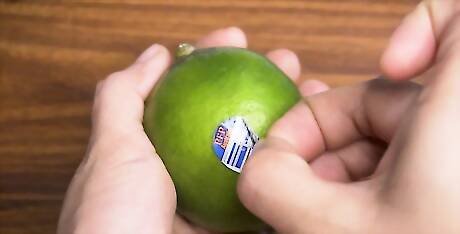
Remove stickers from your lime peel. Peeling stickers off the rind of your lime will make it easier to cut and juice. Remove any stickers from the peel of the lime before you start cutting it.

Hold your lime firmly on a cutting board. Let your lime sit on its side on a cutting board. Hold it firmly with your non-dominant hand, keeping your fingers away from the center of your lime.
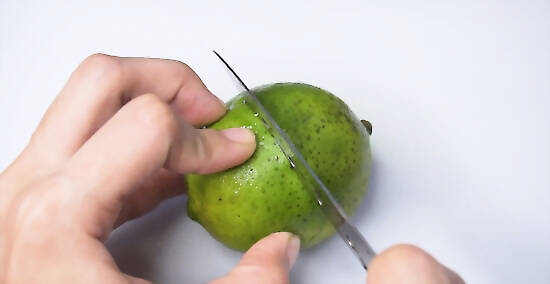
Cut the lime in half width-wise. Use a short, sharp knife to cut the lime in half. Keep your cut at the widest point of the lime. If you don't cut the lime at the widest point, it will be more difficult to squeeze out the juice later.
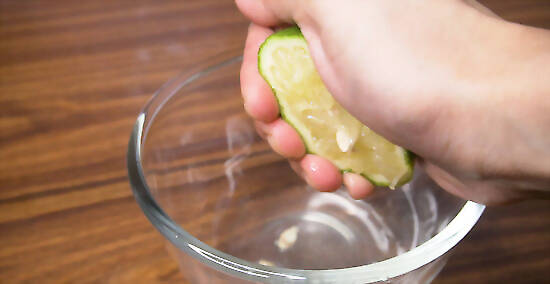
Squeeze each half of the lime into a bowl. Hold the lime with the pointy end toward your palm and the flesh facing toward your bowl. Squeeze firmly to express the juice from the lime. Rotate the lime half a turn in your hand and squeeze again to get the rest of the juice. You can also use a glass, shaker, or measuring cup to collect your lime juice. If you're making a drink like limeade or margaritas, you can even squeeze it right into the pitcher.
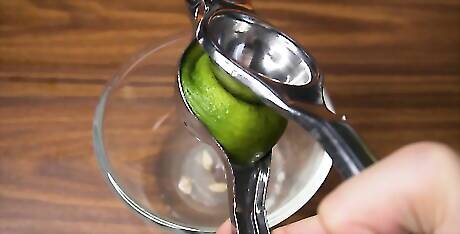
Use a citrus press to juice the lime if you don't want to use your hands. If you want to avoid getting lime juice on your hands or in open cuts, use a citrus press to juice your lime halves. Place the flesh of the fruit down toward the juicer holes. Then, squeeze the juicer down until the handles come together. Citrus presses are available from most kitchen and home goods stores, as well as online.
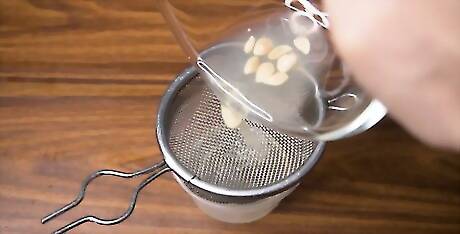
Filter the juice to remove seeds and pulp. If you got any seeds or unwanted pulp in your lime juice, pour it through a fine mesh strainer. This will remove any unwanted flesh and seeds and get your juice ready to use. Filtering isn't necessary. Lime pulp is safe to consume. Filtering just gives you a smoother finish if you're mixing your lime juice into a cocktail or recipe.


















Comments
0 comment